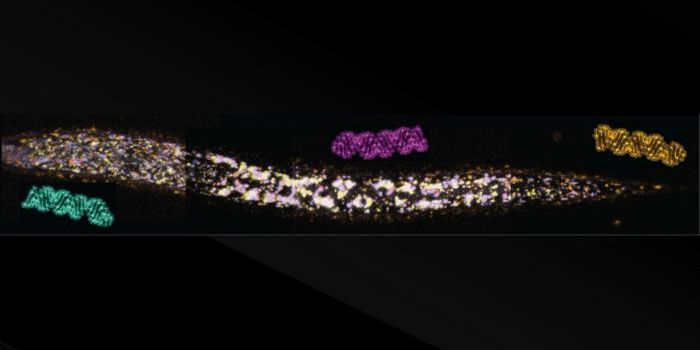In the study of cell signaling, one well established paradigm is that receptors on the surface of cells receive input from chemicals outside the cell such as neurotransmitters, drugs, hormones, or foreign invaders, to name but a few, that initiate a signaling cascade. Research conducted at Duke Health has now described a new model of signal activation.
It’s accepted that G protein coupled receptors (GPCRs) start the signaling sequence in cells after they bind to their ligand. That ligand causes a conformational change in the receptor that in turn activates the attached G protein, causing myriad downstream effects. That process is followed by a desensitization that halts activation and returns the cell to a normal state.
The desensitization is orchestrated by beta-arrestin, a protein that blocks additional activation of the GPCR by binding the receptor and pulling it into the cell in an endocytic process.
More in-depth study of this process has revealed however, that things are more complex than realized. Researchers have determined that some GPCRs keep signalling to G proteins even after beta-arrestin is on the move and the receptors were enveloped in cellular compartments called endosomes.
Research published in Cell and led by Robert Lefkowitz, M.D., a Howard Hughes Medical Institute investigator who shared in the 2012 Nobel Prize in Chemistry for work on cell signaling, has described new information about the GPCR mechanism.
Scientists led by Lefkowitz characterize the existence, architecture, and functionality of super structures of receptors, which they have termed "mega-plexes" by using a range of biochemical and biophysical techniques.
These mega-plexes are apparently different from the usual couplings of receptors with beta-arrestin; G protein and beta-arrestin are simultaneously bound by using different regions of the receptor. Beta-arrestin only interacts with the receptor tail and leaves the entire inner surface of the receptor exposed which enables the receptor to continue activating the G protein.
"The formation of such mega-plexes explains how G proteins can continue to send signals after being internalized by GPCRs," Lefkowitz said. "This opens a whole world of possibilities yet to be explored to manipulate this duality of signaling from outside and inside the cell for therapeutic benefit."
Alex R. B. Thomsen, a co-first author of the study, said some previous reports showed that cells respond differently to G protein signaling from different cellular compartments.
"As a result, pharmaceutical drugs developed in the future, if they are capable of regulating signaling at specific compartments, might be able to better treat certain diseases while having fewer side effects," Thomsen explained. He added, however, that clinical applications of this research are years away.
Sources:
AAAS/Eurekalert! via
Duke Health,
Cell










